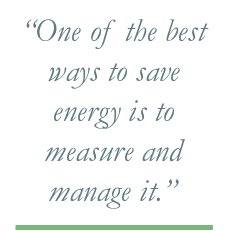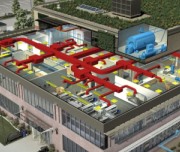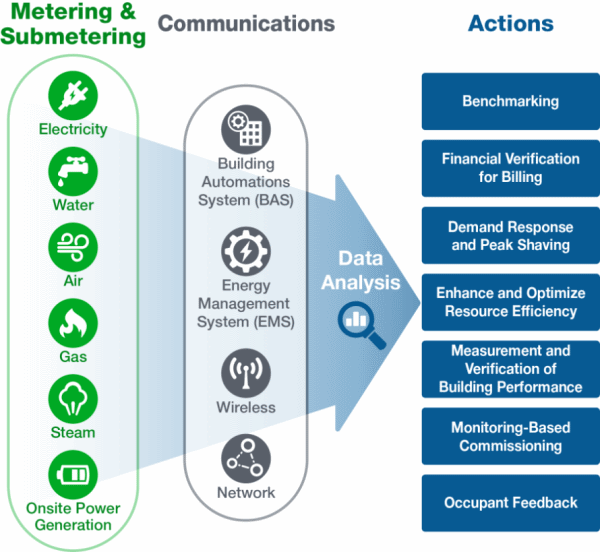System Impacts
O&M Impact

One of the best ways to save energy is to measure and manage it.
There are two basic methods for managing resource use:
- through improved resource efficiency
- through increased resource conservation.
Resource efficiency is commonly achieved by installing or replacing high energy-use building systems with energy efficient technologies. Resource conservation, on the other hand, is reached by improving operations and maintenance practices and/or occupant behaviors such as reducing unnecessary lighting, heating loads, optimizing equipment schedules, and temperature set points and setbacks.
Submeters can help achieve both O&M resource management objectives. Submeters enable resource efficiency by providing accurate and real-time information that can be used to improve performance of new and existing building systems. Submeters encourage resource conservation by providing energy-use transparency to building owners, energy managers, and occupants.
O&M and Portfolio Management
Submetering infrastructure has the potential to benefit building management, O&M staff and Portfolio Managers through improved asset management, enhanced portfolio planning and integrated decision-making. These benefits could include:
- Cost Recovery through Improved Billing. Energy costs are often allocated to tenants based on a common formula - normally based on the square footage of the tenant relative to the total leased space in a building - which can be highly inaccurate. Submetering enables management to accurately bill for tenant consumption or in some cases, more accurately bill for overtime utility consumption.
- Financial Verification for Billing. Reducing billing errors from a utility or other energy provider can be another area of benefit. These errors could include incorrect meter readings either from incorrect data or interpretation as well as skewed demand charges from varying billing intervals.
- Demand Response and Peak Shaving. Submeter data is used to understand where and when regional management can shape peak energy use to take advantage of time-based utility rates. Additionally, organizations can participate in financially beneficial demand response programs that reward sites for reducing load during certain time periods when the utility grid is overtaxed.
- Project Measurement and Verification for Improved Portfolio Management. Improved measurement of project performance can provide key stakeholders with information to make data driven decisions. Collectively, these activities can measure impact of equipment retrofits across regions, compare savings to reduction goals, and potentially substantiate additional retrofit projects at other sites.
- Improve Future Designs and Inform Prospective Investments. Submeter data could be used to better size systems for optimized building performance, save operations and maintenance costs on existing equipment, or defer capital investments.
- Improve Resource Planning and Efficiency. Streamlined data collection and reporting could inform resource allocation of supporting energy management stakeholders. In the federal space, regulatory requirements provide mandates for improving energy management and monitoring. Section 103 of the Energy Policy Act of 2005 requires the metering of all covered federal buildings to reduce electricity costs and decrease use. The Energy Independence and Security Act of 2007 requires federal agencies to implement thorough energy management protocols by establishing energy benchmarks for their facilities’ portfolios, perform life cycle cost effective energy management projects, and monitor and verify the resulting benefits and cost savings of the implemented measures. Receipt of Energy Star and/or LEED certification and the associated energy tax credits is an additional incentive for metering in federal facilities.
Best Practices and Strategies
| Consider selecting revenue grade electric meters with web integration functionality to ensure greater accuracy and monitoring. | When considering adding supplemental submetering to existing building systems, consider ensuring branding compatibility with existing equipment and network platforms for easier data integration. | Consider reconciling front-end metering and monitoring system with manual readings to ensure accuracy. |
| Ensure that building and system operators have access to training or are already prepared to provide cost-effective meter and invertor maintenance or select vendor or firm that will provide adequate operations and maintenance. | Tap into existing energy management systems wherever possible. | Tailor submetering information and feedback mechanisms to intended users, focusing on breakdown of resource use and historical data. |
| Data collected by submeters should support improved decision-making for O&M activities that align with project and business objectives. | Keep building managers trained and up to date on new building technologies. |


